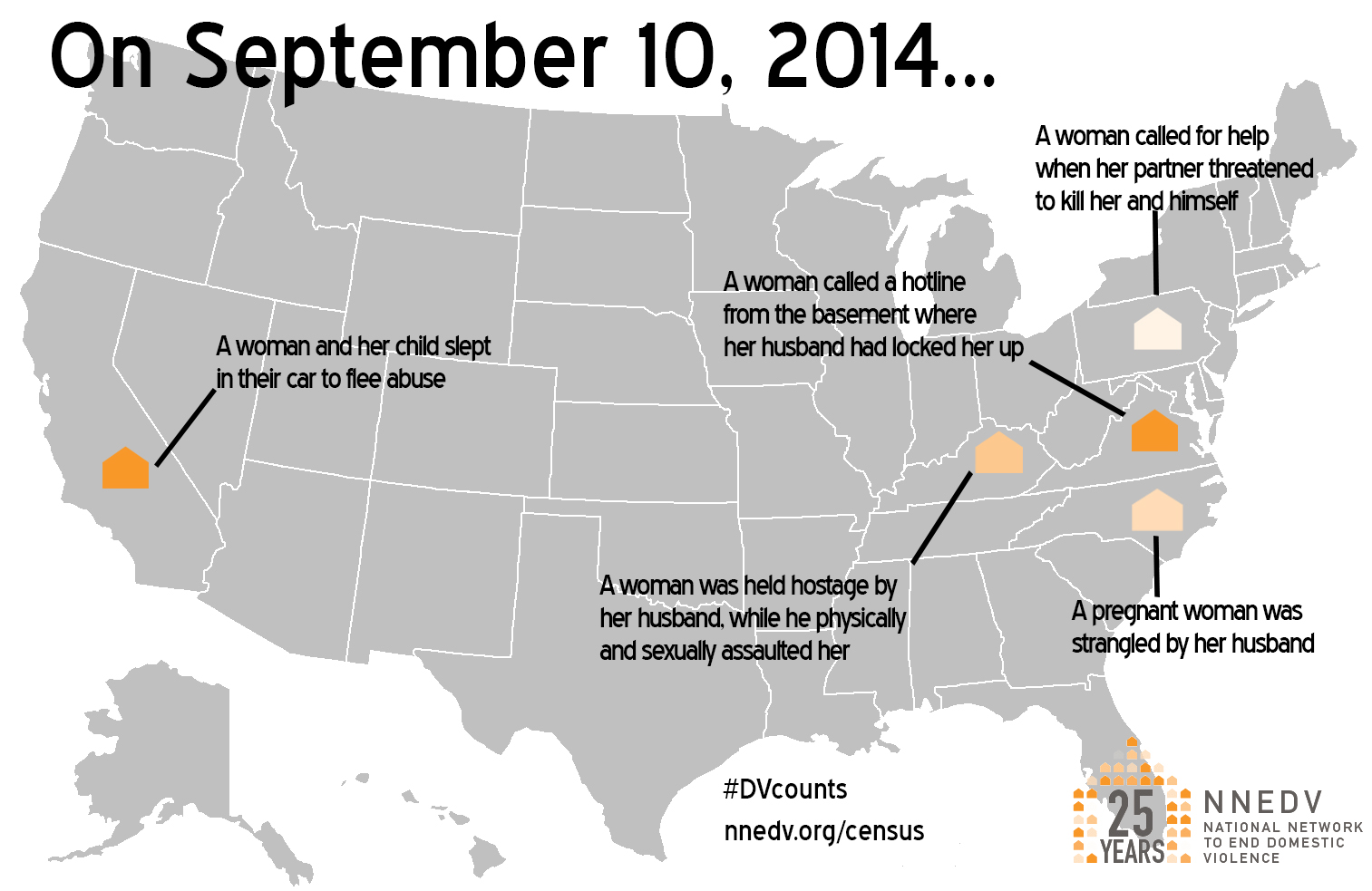Announcing the 9th Annual #DVcounts Census
June 8, 2015
Report reveals gaps in domestic violence service provision, highlights successes
For the ninth consecutive year, the National Network to End Domestic Violence (NNEDV) conducted its annual National Census of Domestic Violence Services on September 10, 2014 and today released their analysis of that data in the report: Domestic Violence Counts: A 24-hour Census of Domestic Violence Shelters and Services.
“According to the CDC, 10,773 babies are born each day in America,” said Kim Gandy, NNEDV President and CEO. “Contrasting this heartwarming number is the devastating 10,871 unmet requests for help, shelter, counseling, and services from victims in just one day across the United States. We can and must fund these local shelters and hotlines so they are not turning even one survivor away.”
In just one 24-hour period, local domestic violence programs across the country provided help and safety to 67,646 adults and children who were victims of domestic violence. Thanks to the tireless work of resourceful local programs, survivors were given a safe place to stay and resources and tools to escape violence and abuse.
Yet on the very same day, there were 10,871 requests for services that could not be met due to a lack of funding. The 2014 census report revealed that reduced funding for domestic violence services means that programs are unable to help survivors with shelter, attain legal help, or leave abusive partners.
The census was held on September 10, 2014, and collected information from almost 90 percent of the domestic violence programs from across the United States. Using data collected from these programs, the 2014 census report identifies needs that were met and unmet on September 10th and provides a snapshot of how budget cuts are affecting the staffing and resources of these organizations.
“This landmark report would not be possible without the support of local and state level-victim advocates, the Avon Foundation for Women, Google, Facebook, Verizon, and the Allstate Foundation,” said Gandy.
The report also chronicles harrowing stories of resilience and recovery from individual survivors. An advocate in Michigan shared this survivor’s experience, “A woman with two children entered our shelter after severe abuse by her husband. At one point her abuser poured transmission fluid on her and her toddler and threatened to ignite them with a lighter. She found safety and security at our shelter and is applying to enter our transitional housing program.”
These stories also highlight the importance of the frontline support and help that advocates provide to survivors every day. An Idaho advocate shared this story, “A survivor we worked with told us how grateful she was for meeting people who were knowledgeable, loving, and caring. She said she felt truly safe for the first time in more than a decade.”
Unfortunately, as a result of insufficient funding, programs were forced to cut over 1,300 staff positions in 2014. Most of these positions (76%) were direct service providers, such as shelter staff or legal advocates. This means that there were fewer advocates to answer calls for help or to provide needed services.






